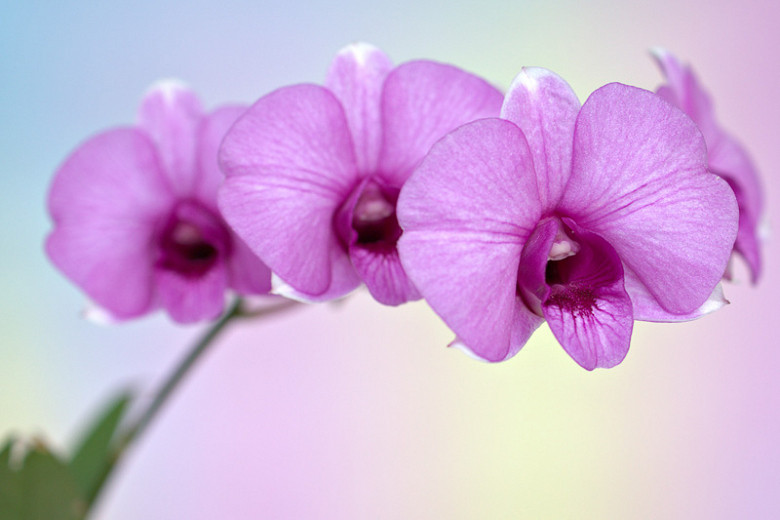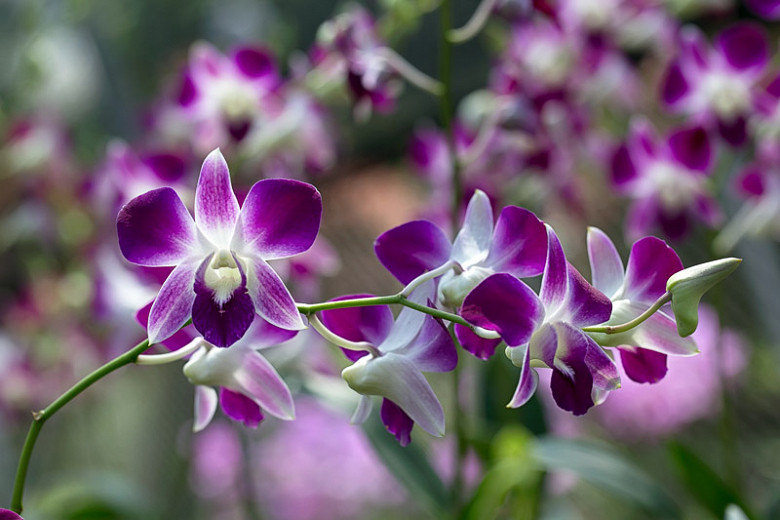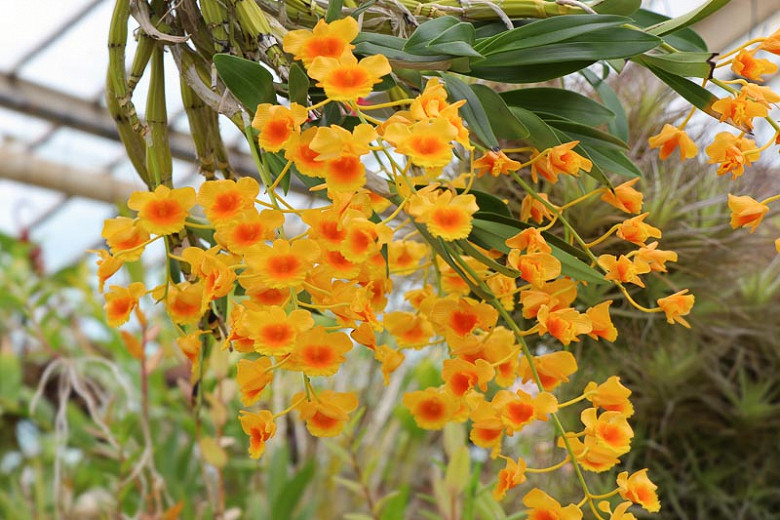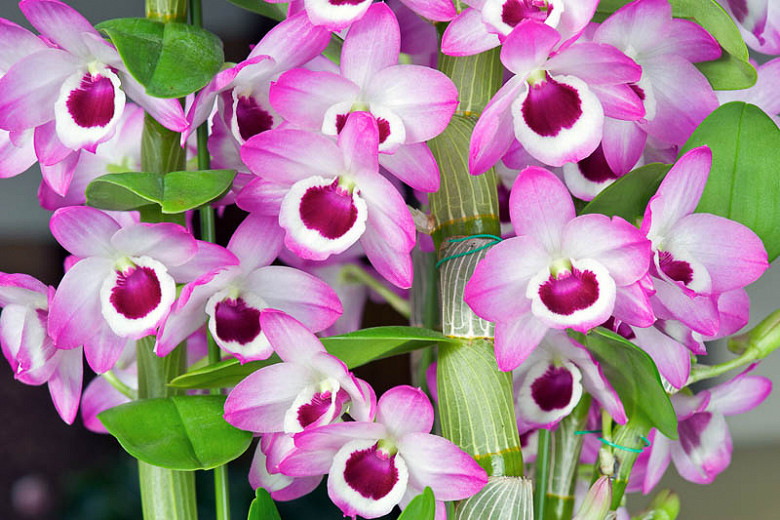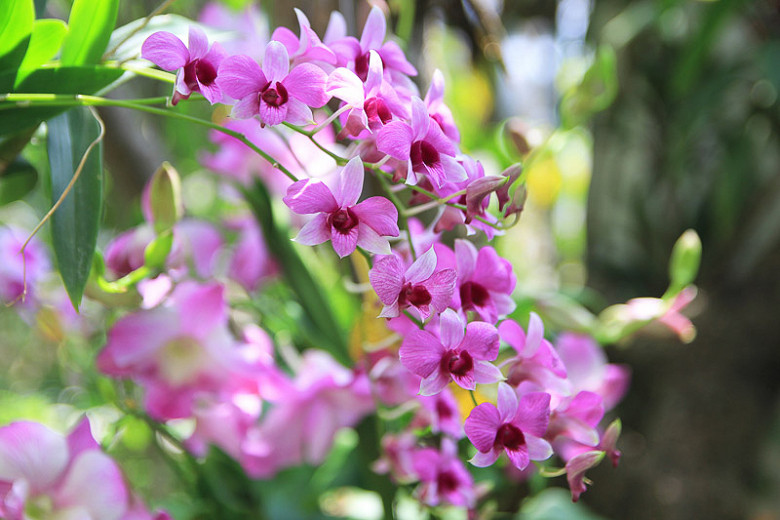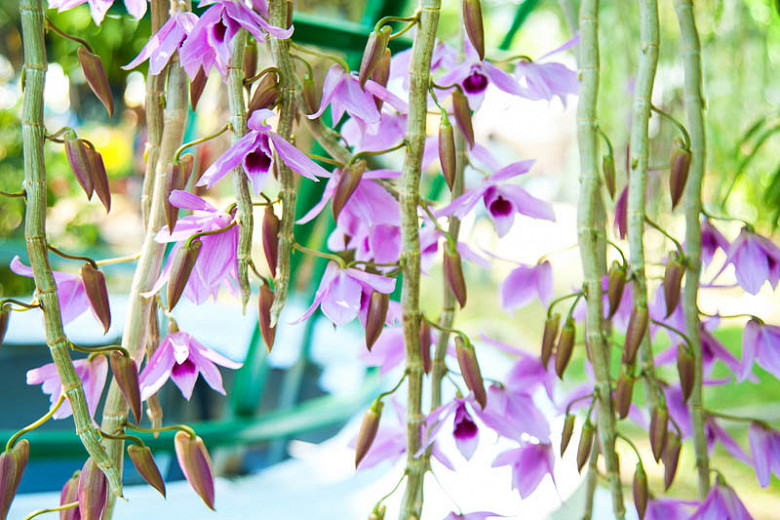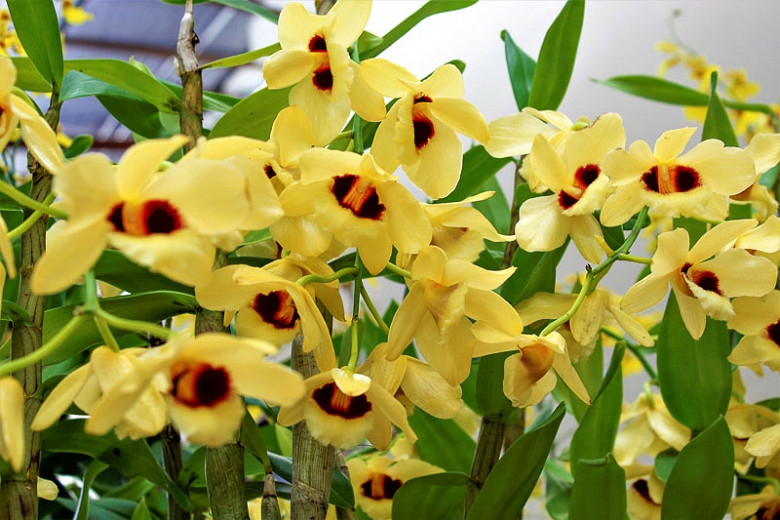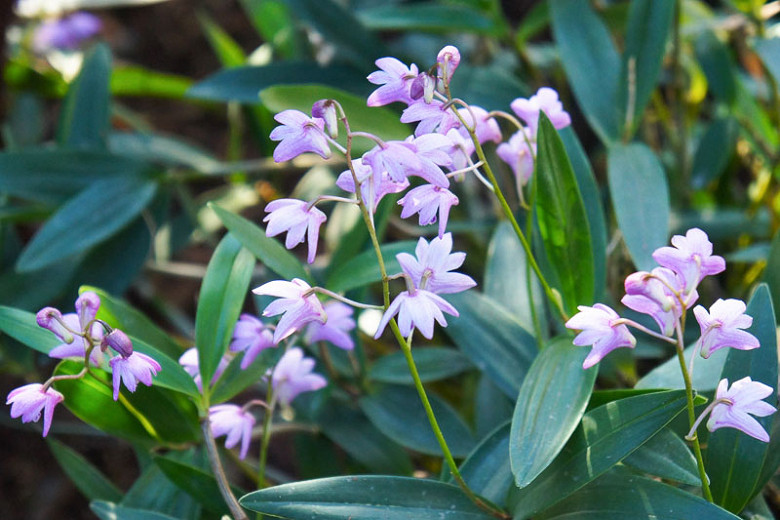Dendrobium bigibbum (Cooktown Orchid)
Dendrobium bigibbum (Cooktown Orchid) is a medium to large, hot growing, epiphytic or lithophytic orchid bearing long, green or reddish-purple stems, 4 ft. (120 cm), with 3 to 12 egg-shaped leaves, 3-6 in. long (8-15 cm). Blooming usually from spring to mid-summer, long-lasting flowers, up to 3 in. across (7 cm), held in arching racemes of 2-20 blossoms, are borne near the apex of the leafy or leafless canes. Pinkish-mauve to lavender, purple, and sometimes almost white, they feature wide, overlapping inner and outer flakes and darker-colored lips. They bloom for about 4 weeks. Native to Australia and southern New Guinea, Dendrobium bigibbum can be found growing in semi-deciduous forests on the branches of trees or on the rocks up to about 1640 ft. (500 m) of altitude. The climate is seasonal, rainy during the summer, and dry during the winter. It is a very variable species that stands between the most popular orchids for its ease of cultivation. This species is the floral emblem of Queensland and grows in semi-arid areas.
- Grows up to 1-4 ft. long (30-120 cm).
- Grows well mounted on bark, trunks, cork rafts, or arborescent ferns roots, or in small pots in medium-sized pieces of pine bark or cork.
- Needs bright indirect light with strong ventilation.
- Needs a minimum night temperature of 71°F (22°C) and a daytime temperature of 84-86°F (29-30°C) in summer.
- Needs a minimum night temperature of 62-66°F (17-19°C) and a daytime temperature of 75-78°F (24-26°C) in winter.
- Maintain high humidity (70-75% most of the year, 65-70% in late winter and early spring).
- This plant should be kept moist during the growing season.
- Dendrobium bigibbum needs a rest period after flowering. Maintain high light during this period and reduce watering to just enough to keep the plant from shriveling. Fertilization should be limited or stopped until spring when stronger watering resumes.
- Feed once a week from spring to mid-summer with a high nitrogen fertilizer. Then use a high phosphorus fertilizer until the end of the fall.
- Repot immediately after flowering.
- Generally disease free. Keep an eye out for aphids, glasshouse red spider mites, and mealybugs.
- Native to Australia and southern New Guinea at elevations below 4590 ft. (1400 m).
Tip for reblooming
- If a plant is healthy but does not produce flowers in a reasonable time, then increase the light, and your orchid should get back on track blooming regularly.
Requirements
| Hardiness | 11 – 12 |
|---|---|
| Plant Type | Orchids |
| Plant Family | Dendrobium – Orchids |
| Exposure | Partial Sun |
| Season of Interest | Spring (Early,Mid,Late)Summer (Early,Mid) |
| Height | 1' – 4' (30cm – 120cm) |
| Water Needs | Average |
| Maintenance | High |
| Soil Drainage | Well-Drained |
| Characteristics | Showy |
| Native Plants | Australia |
| Garden Uses | Patio and Containers |
